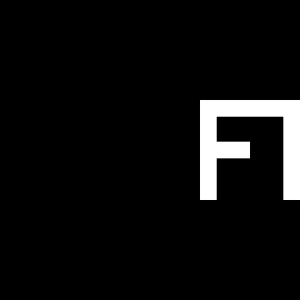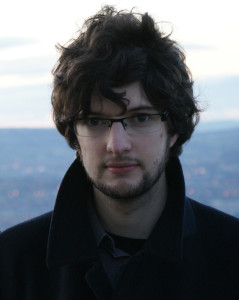When we are preparing for the release of Cerberus Bass Amp last time, a friend told us that we should check out the latest release by Adam Fielding called “Pieces(2014)“. “It’s entirely made using Propellerhead Reason 7, and most of the guitar tracks are recorded using Kuassa!” he said.
That’s interesting… We need to check that. Then we headed to Adam’s soundcloud page to find out about the album. We haven’t heard Adam’s work before, so it’s unexpected since he’s doing a post-rock/electronic/ambient stuff with Kuassa plugins. We dig those genres, nice!
We would describe the album as a dramatic composition of glitchy beats, droning synths, sweet pianos and bells, and lush guitars. Everything’s arranged to mold each song’s emotional content, so you can almost picture a specific moments of your favorite movie scenes in every fragment of the songs. From Danny Boyle’s “Sunshine“, to Michel Gondry’s “Eternal Sunshine of the Spotless Mind“. Thumbs-up for the fluid dynamics of the songs. There are many breakdowns, but the buildups never gets boring until it’s climaxed to give you creeps. Epic.
There’s many questions on our heads about his production process, the gears, where his inspiration comes from, so we asked him if he is okay to do an interview with us. And here it is:
- Firstly, can you tell a bit about your solo music project, and what dives you into the vast world of DAWs?
Well, I started off writing music using an Atari ST and a copy of ProTracker in the mid-90s, and ended up having a lot of fun with that – I ended up using various trackers on the PC until around  2001, when a friend of mine told me to check out this bit of software called Reason. I tried the demo and fell in love with it, and ended up picking that up in 2002. At the time I was teaching myself to play guitar, and as time went by I realised that what I really wanted to do with my life was something related to music and/or sound design. After working a couple of jobs for a few years, I decided to study music production at university, which got me in touch with some awesome people who really helped to get me focused on what I wanted to do when I finished studying my degree. After years of releasing music for free on-line, I put out my first independent album while I was in my final year at university, and I haven’t really looked back since!
2001, when a friend of mine told me to check out this bit of software called Reason. I tried the demo and fell in love with it, and ended up picking that up in 2002. At the time I was teaching myself to play guitar, and as time went by I realised that what I really wanted to do with my life was something related to music and/or sound design. After working a couple of jobs for a few years, I decided to study music production at university, which got me in touch with some awesome people who really helped to get me focused on what I wanted to do when I finished studying my degree. After years of releasing music for free on-line, I put out my first independent album while I was in my final year at university, and I haven’t really looked back since!
- Do you have a profession other than as a musician? How do you allocate time to produce the album in the midst of your busy life?
Right now I work full-time as a sound designer & musician. My duties are split between writing production music for licensing purposes, creating new and interesting sounds for use with various soft-synths – mostly through my work with Nucleus SoundLab – and I’ve recently started doing some professional sound design for mobile apps. On top of that, I also have my own solo output, and it’s great to have that distinction – by removing any expectations or deadlines from my own work, it means that I’m able to put out the kind of music that I want to. That’s not to say that I don’t enjoy writing music for production use, but it’s good to have that kind of mental divide between the two. Sometimes they cross-over, and sometimes they don’t, but it helps with how I approach a body of work. I also work from time to time with a post-rock band called Civil Protection – I’ve taken a step-back as a full-time guitarist, but I still perform and work on material with those guys from time to time.
- Can you tell me about your latest album? It’s full of cinematic soundscapes with shoegazing guitars (we played them for a whole day straight as our working background, really inspiring!) and curious what’s the inspiration behind them.
 That’s awesome, thanks a lot – I’m really glad you liked it so much! Interestingly, Pieces is actually one of those instances where my production & solo work crossed over in a big way. I wrote a pretty substantial body of work in October 2012 with a tentative view to using it for licensing & production, but really it was a way for me to get out of a bit of a song-writing slump – I wanted to get as many ideas down as quickly as possible without obsessing over details or my own personal criticisms, and it really worked incredibly well. A few songs were picked up by various agencies, but I was so thrilled with the result that I ended up going through a couple of other song-writing sprees, and compiled my favourite tunes from each into the release you hear today. Because everything was written in short, concentrated bursts, it really helps to highlight my influences and ideas at the time. For instance, I have a particularly strong memory of cold autumn light and going on regular runs around the local landscape, which is something I got into regularly doing to break up these intense song-writing sessions. Then there was another session where I’d come off the back of performing a short tour with Civil Protection, so I was very much in a “big, epic guitars, with lots of energy” mind-set. It’s great because by working on ideas so quickly, it feels like an incredibly honest collection of songs to me, and it has this wonderfully strong time capsule-esque quality to it. Well, to me, at least!
That’s awesome, thanks a lot – I’m really glad you liked it so much! Interestingly, Pieces is actually one of those instances where my production & solo work crossed over in a big way. I wrote a pretty substantial body of work in October 2012 with a tentative view to using it for licensing & production, but really it was a way for me to get out of a bit of a song-writing slump – I wanted to get as many ideas down as quickly as possible without obsessing over details or my own personal criticisms, and it really worked incredibly well. A few songs were picked up by various agencies, but I was so thrilled with the result that I ended up going through a couple of other song-writing sprees, and compiled my favourite tunes from each into the release you hear today. Because everything was written in short, concentrated bursts, it really helps to highlight my influences and ideas at the time. For instance, I have a particularly strong memory of cold autumn light and going on regular runs around the local landscape, which is something I got into regularly doing to break up these intense song-writing sessions. Then there was another session where I’d come off the back of performing a short tour with Civil Protection, so I was very much in a “big, epic guitars, with lots of energy” mind-set. It’s great because by working on ideas so quickly, it feels like an incredibly honest collection of songs to me, and it has this wonderfully strong time capsule-esque quality to it. Well, to me, at least!
- Why you decide to release them for free when you can make big money selling the album? (Maybe to… a triple-A game developer?) is there any specific reason behind this?
Honestly, I only decided to release these songs at the start of 2014 – I realised that I had this substantial body of work that I was really happy with, and I figured it was time to do something with it. I spent months working on release ideas and various masters, and in the end I decided that releasing it for free just felt like the right thing to do. My past couple of albums (Icarus and And All Is As It Should Be) had both been label releases, and I wanted to get back to the excitement of releasing music independently. That gave me the freedom to try out new ideas, which is why I decided to release the audiophile master of Pieces as a bonus to paying listeners. Still, because I’d grown quite attached to it, I wanted to keep a hold of all rights to the release, but I wanted to make it as easy as possible for people to listen to it. I think people have really taken to that idea, and it’s been amazing to look at the download figures for Pieces compared to my previous label work. I’m still pursuing licensing opportunities for Pieces, but I really wanted to avoid handing any sort of exclusive rights to the material to anyone else. In hindsight, I regret doing that with my past couple of releases, and in trying out new ideas and releasing it for free it’s really helped to put me in touch with the excitement of releasing my first album, and the fun I had just trying to figure everything out on my own.
- we heard that this album was produced entirely in reason 7 and you used Vermilion and Creme a lot. Can you tell me how the production process was done? What do you like most about our plugins?

Amplifikation Vermilion RE

Amplifikation Creme RE
Pretty much the entire album was written, recorded, produced, and mixed with Reason. There are some parts that incorporate percussion from Reaktor, or some atmospheric beds from Alchemy, but most of the work was done in Reason – I wanted to get my ideas down quickly, and Reason is my personal weapon of choice for writing songs without getting in the way. I started writing these songs quite shortly after Rack Extensions became available, and that really got me excited to try out new ideas and techniques. Something I’d wanted in Reason for a long time though was an alternative to the default Line6 amps – I had previously bounced material out of Reason, processed it with Guitar Rig, and brought it back in, but that really isn’t particularly conducive to a consistent workflow! When Vermillion & Creme were announced I was all over those, and now I tend to use them pretty much exclusively for my guitar amp sim needs. Vermillion just has this wonderful feel to it, particularly on clean guitars, that I’d been wanting for such a long time in Reason. Creme, on the other hand, was just what I needed for my heavier guitar parts, it’s just amazing at that. Between the two of them I’ve got most of my own personal amp sim needs covered, and after years of using default Line6 devices and bouncing audio out they really came as a wonderful breath of fresh air. That said, I don’t limit my heavier stuff to Creme and vice versa – one of my favourite heavy guitar parts on Pieces (the end of the second track) was accomplished with Vermillion, so they’re both pretty versatile beasts. The ease of customisation and tweakability, combined with a really satisfying sound is what’s made me stick with them.
- Concerning the superb quality of the album. Can you tell me about your recording gears? And who helped you with the production? (If any)
That’s very kind of you to say, and even more-so considering that it was all done by me. It was a very personal project, so all of the production, recording, performances, mixing… everything is me. That probably makes me sound like a complete control freak, haha! The album was recorded in my home studio using Reason, and everything was recorded through a Focusrite Saffire Pro 40 which I’ve been using for about five years now – I love that thing. I don’t own any fancy outboard equipment, and my guitars are pretty low budget… but I love how they sound, and I don’t like to mess wit h instruments too much if they sound the way I like. For vocals I’m still using an old SE 2200a mic for most recording – I picked that up while I was at university, and for a cheap condenser mic I think it does a superb job with my vocals. I also do a lot of field recording with a Roland R-05, and it’s a nice way of adding an organic touch to atmospheric sounds. A lot of the synth sounds on Pieces that weren’t created by me came from Refills by Tom Pritchard, including both Thorkit Refills and Vast – those Refills are absolutely phenomenal and I heartily recommend any Reason user to give them a try. The key thing for me now is to be as spontaneous as possible, and my current setup allows me to be spontaneous – Pieces used a particular palette of sounds, and even though it was written in bursts I think that gives it a bit of a coherent sound, which is why I think it works surprisingly well as a whole.
h instruments too much if they sound the way I like. For vocals I’m still using an old SE 2200a mic for most recording – I picked that up while I was at university, and for a cheap condenser mic I think it does a superb job with my vocals. I also do a lot of field recording with a Roland R-05, and it’s a nice way of adding an organic touch to atmospheric sounds. A lot of the synth sounds on Pieces that weren’t created by me came from Refills by Tom Pritchard, including both Thorkit Refills and Vast – those Refills are absolutely phenomenal and I heartily recommend any Reason user to give them a try. The key thing for me now is to be as spontaneous as possible, and my current setup allows me to be spontaneous – Pieces used a particular palette of sounds, and even though it was written in bursts I think that gives it a bit of a coherent sound, which is why I think it works surprisingly well as a whole.
- Lastly, what are you trying to achieve next?
I feel like I’m in a pretty good place in terms of my music and sound work, and to be honest I feel incredibly grateful to have people listening to and enjoying my music while working on other audio projects in a professional capacity – it’s pretty much exactly what I’d hoped to do when I finished university, and it’s amazing to have reached that target. That said, I’m always striving to try new ideas out, and right now I’ve started working tentatively on a couple of new projects – I’m having a lot of fun with my rather conservative selection of outboard synths, and I really want to create something new with that. I’ve got some interesting collaborative work on the cards, and I’ve already started work on a tentative future project that’s in a similar sort of vein as Pieces, albeit with a more concrete end-goal. I’m trying to work more organic sounds and instrumentation into my own solo work, and in a sense that’s having an interesting effect on the way I work. Ultimately though, my main goal has always been to write music that I would find appealing, and if I can continue to achieve that with my next release then I’ll be a very happy man!
Find out more about Adam Fielding here:

